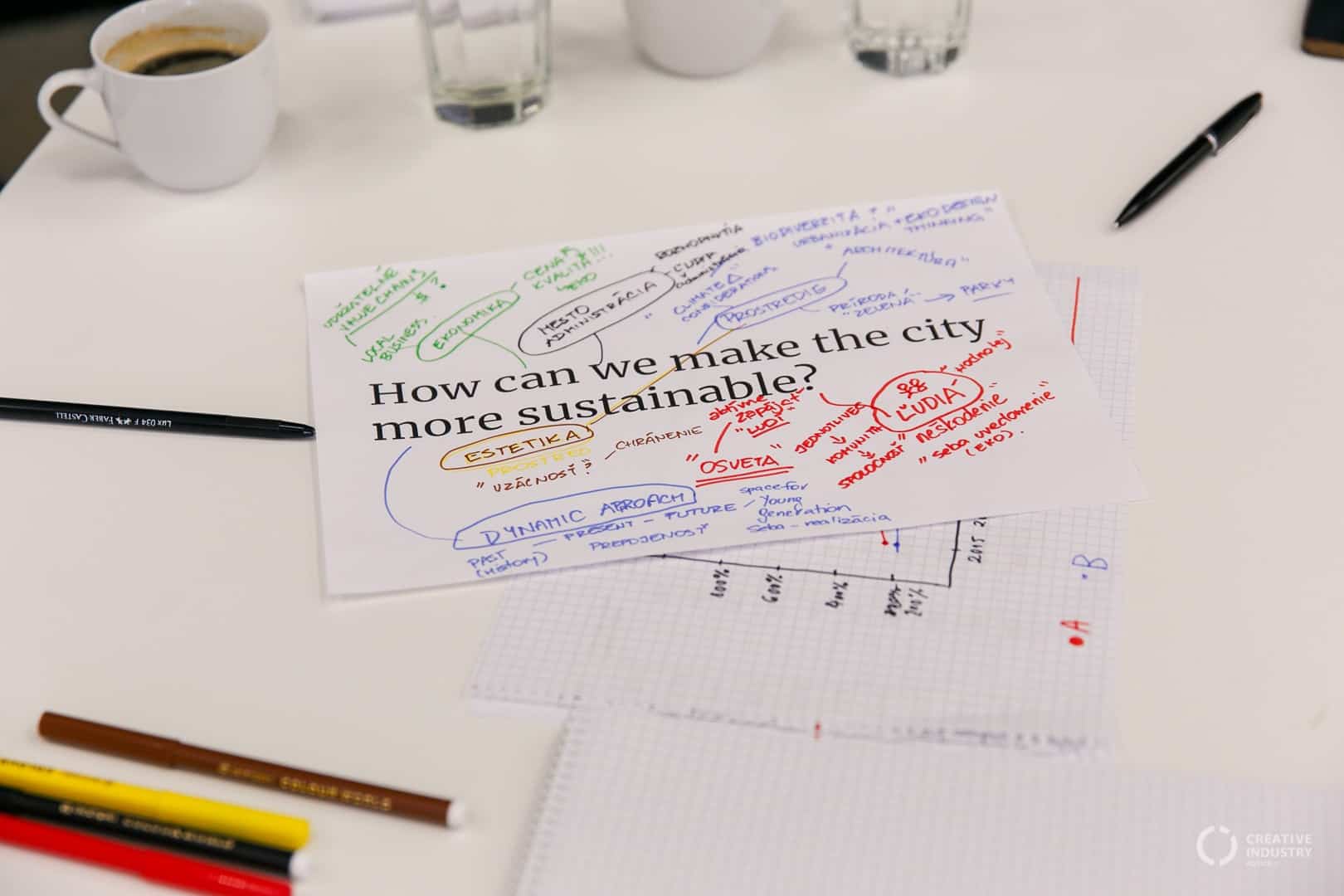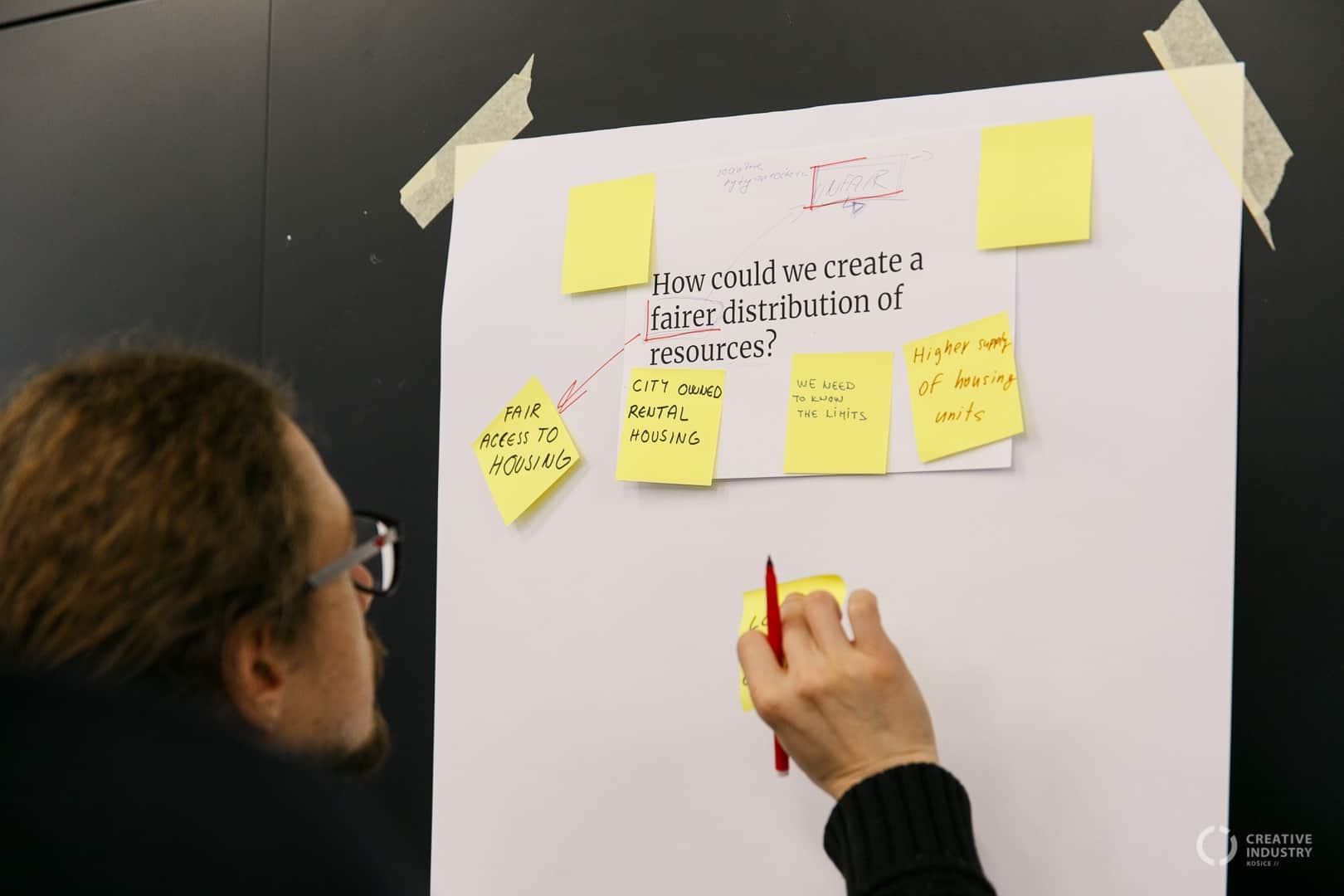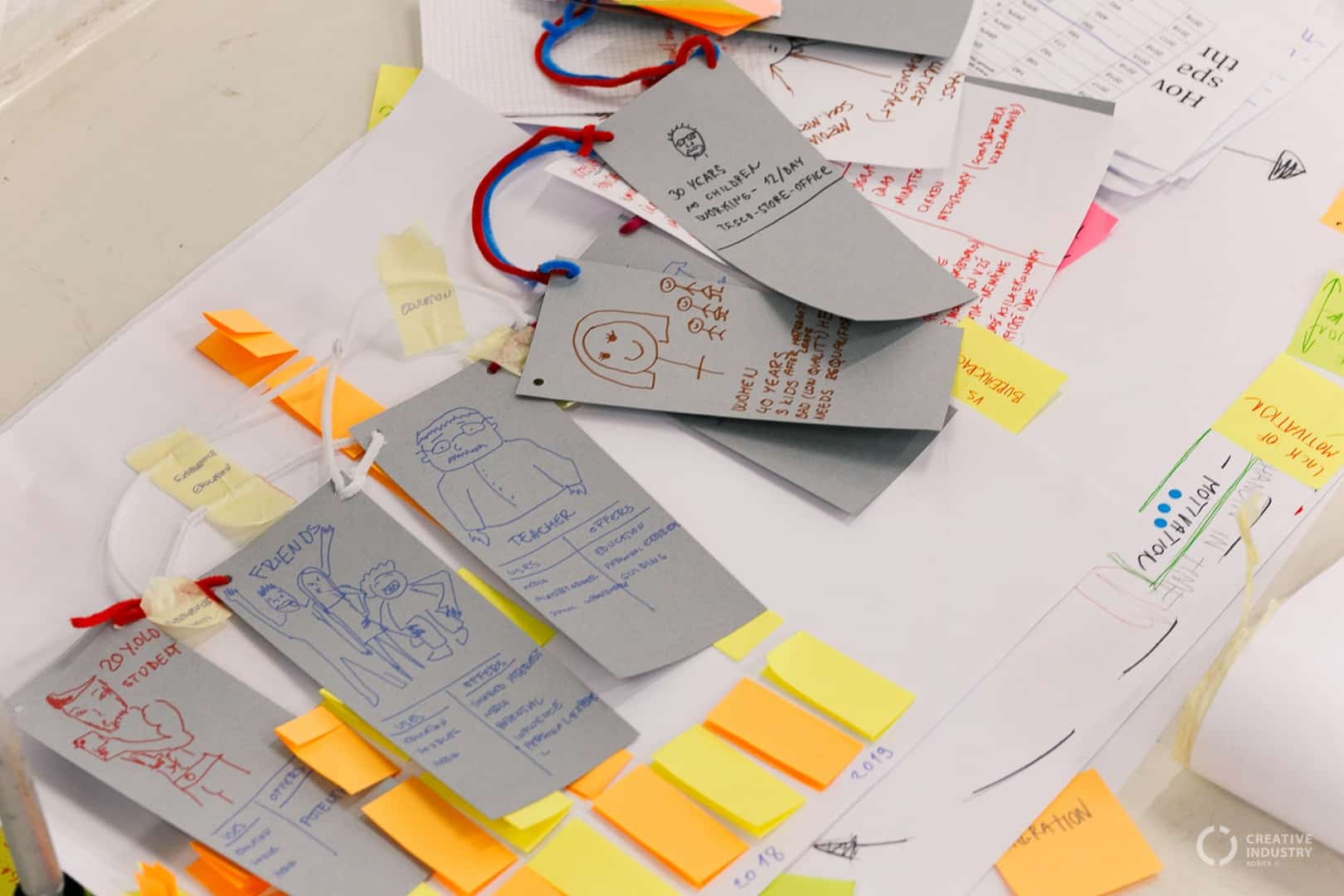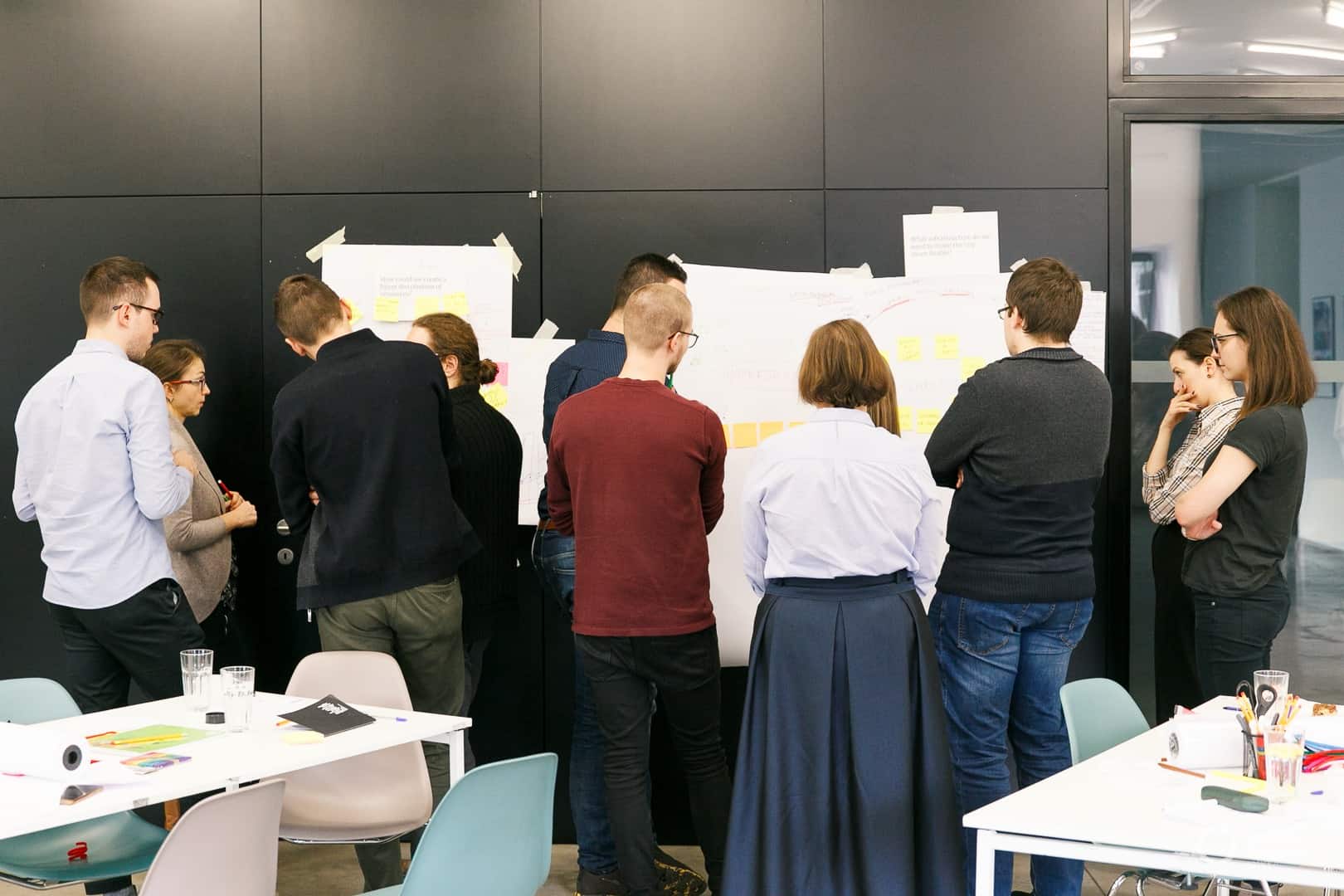In the 21st century, there are methods through which we can create products and services which are attractive to users. They are cheaper, more efficient, and more environmentally friendly than producing something that people don’t want or need. Simon Gough designs human-centered services. Lucy Knight has one of the most desired job titles globally – she is a data scientist. In this interview, they talk about what their day-to-day work looks like and why companies and cities should use their services. You will also learn more about the workshops they facilitated in Košice.
What is design thinking and what it’s used for
A human approach to creating things is a way of thinking that tries to understand people. Designers must be aware of people’s problems and desires. They have to find possible and reasonable solutions to existing issues. The information they collect will be used later when creating a product prototype. “My work is about the creative and effective exploration of human needs. Companies try to save as much money as possible during the production process, and they usually skip this step. They invest right away in the production of something about which they later learn doesn’t work, and their customers don’t actually want it,” says Simon from The Data Place. He thinks it’s much better for the companies to first invest in people’s needs and produce a product prototype. Ultimately, it will always end up being much cheaper for the companies than the other way around.

How to design services
Buying a cup of coffee, visiting a doctor, or paying online via card are services that are constantly being used. Whether they work or not is the result of their design and setup. Simon says that the combination of design thinking and services creates new tools to better evaluate the performance of products and then improve them. In practice, the process starts with a brief description of the problem. The next step is to get to know people actively. You have to observe their behavior and motivation. It would help if you asked them many questions, and their answers should be quick and intuitive.
For example, if a hospital has a problem with its departments’ conditions, its representatives may say that the emergency room doesn’t work well. There might be a lot of patients who are left unattended in the hallway for a long time. They are unhappy about waiting time and confused about the way the department works. “In such a case, we will first talk to the staff and then to the patients who we will observe closely for a while. We will be interested in how they move in space, how they look and behave,” explains Simon. Based on the findings, research will be formalized on which they can rely in the future. Then they will work on creating a test plan and suggest possible solutions. “I’m a fan of repairing things, not destroying them and re-creating them from scratch. It is important to think about differences, look for new approaches and ways of looking at human needs. It would be much cheaper to implement a new way of functioning at the emergency department or improve its space rather than build a new one. If we test new ideas throughout the process, we will learn a lot from them, and it will be much easier to work on similar projects in the future. We should try things that we haven’t tried before more often. Thanks to that, we can only move forward,” he adds.

One of the most desired jobs
If we combine a programmer and a statistician, we get a relatively new position – data scientist. Lucy Knight from The Data Place searches for data and creates analysis, visualizations, statistics, machine learning models. “In this work, you need to be knowledgeable in different areas and possess multiple technical skills, but you don’t have to be an expert in everything. It is important to bring together everything you have found out meaningfully. Scientific data is used primarily by large organizations such as banks, accommodation platforms, newspapers, or websites. This job position requires both a technically skilled person and a creative person who will complement the data with a story, picture, or infographics. “This position didn’t exist in the past. It’s a modern matter that can transform data into beneficial things,” adds Lucy.
If a government or any smaller entity wants to decide what to spend their money on, they will need data. It is important to realize that some cities have certainly faced the same (or a similar) problem before us. This means they probably already have the data. Further research may show that they differ from the new data. Data scientist’s job is to describe these differences and discover their cause. “We have to find out how the situations differ and what this means for the client. For example, large companies need data about their customers and what and when they buy their products. Based on this, we can say, for example, whether it is better to start the sale on Friday or Monday morning. In this discipline, we explore things in-depth, not superficially,” explains Lucy.

The city should also understand its inhabitants
For cities, it can be useful to know their inhabitants when they want to build a new technical network, web, application, digital service, or anything else. In their development, it is most important to think of people, because they are the future users of these services. The city must be understood as a large, complex and complicated system. “You always have to consider what really matters and wonder if it’s really necessary,” says Simon. He further explains that the best methods for this are design and system thinking alongside the data, as they promote collaboration and, in the initial phase, set the direction to be taken.
“All digital products are mainly about people, not high technology.”
SIMON GOUGH
Cities should care about effective investments, as their budget comes predominantly from the people. If they identify and correct their products’ deficiencies during their development, they will save a lot more money compared to if they were to produce something useless that no one would want. “If we do not engage end-users in the production process, we will never know what they really want and need. Producing in this way is a waste of time and resources. To understand people is to help them live a better life. This is the best argument for the city to take advantage of human-centered design. Thanks to this, they can find creative solutions to problems,” adds Simon.

Lucy says cities shouldn’t have a monopoly on data. Many people need them to do their jobs better and make their lives easier. If these individuals come together and share data, they can gain new perspectives and ideas. They can innovate because the country’s government must be stable, safe, and consistent. It cannot afford to experiment too much. Therefore, it is more important to share data with innovators, which costs nothing. This allows innovators to come up with new solutions for which they will receive money – on the contrary – and this is also beneficial for the government, as it will generate economic, cultural, and social benefits.
What we can learn
Simon and Lucy came to Slovakia because of the workshops they led as part of our Creative Cultural Spaces and Cities project. By sharing their own experience, they wanted to support local cooperation between different actors. “The main reason we are here is to connect and encourage people who have never worked together before to work together. We try to encourage their own creativity and show them new approaches to creating things. We want them to understand that it can be quite easy for everyone to get started and that researching and getting to know users can be used in the production of anything,” explains Simon. They showed the workshop participants how collaboration leads to progress and success. Lucy comments on the group that signed up for the workshops: “There were people from the city, cultural sector and also students. All of them had experience with their own projects and cooperation. They understand what they are doing and have great plans. We look at their activities, and we see their future will be great. With Simon, we could see how they began to think about day-to-day collaborations that would help them move forward in the projects,” concludes Lucy.

Cultural and Creative Spaces is co-funded by the Creative Europe Programme of the European Union.








